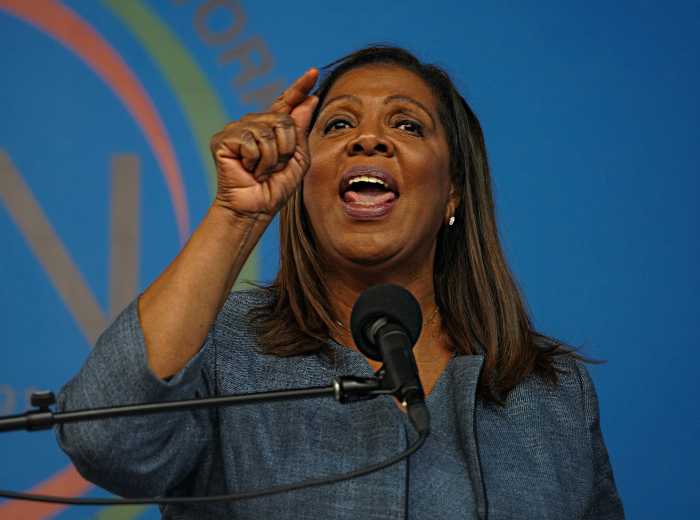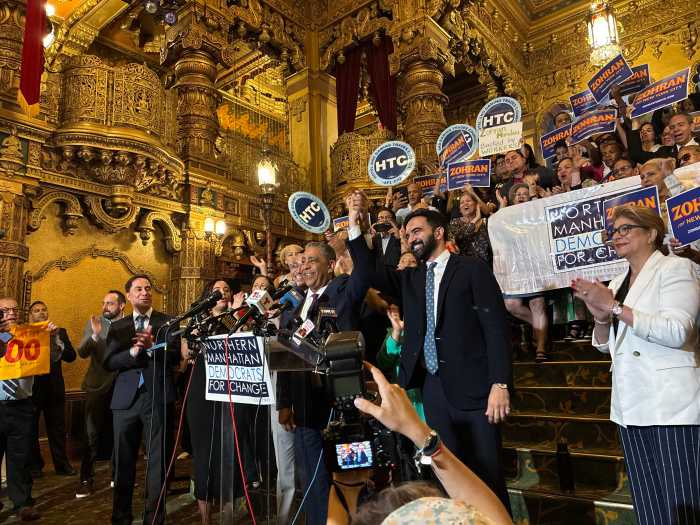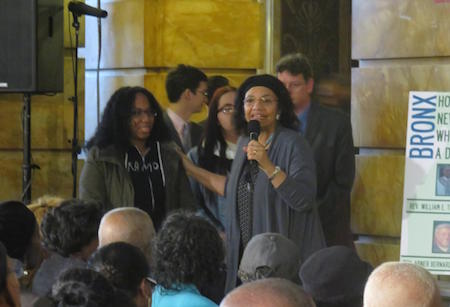
BY JACKSON CHEN | Thanks to the efforts of several Upper West Side high school students, the corner of West 103rd Street and Broadway will honor the legacy of American artist Norman Rockwell.
Students from Edward A. Reynolds West Side High School, on West 102nd Street, were on hand on February 25 to rejoice as Mayor Bill de Blasio signed the renaming to Norman Rockwell Place into law. The designation marks the block where Rockwell grew up. The students’ interest in the painter and illustrator — best known for his hundreds of covers on the Saturday Evening Post — all started with their English teacher, René Mills.
Specifically, Mills said, Rockwell’s “Four Freedoms” oil paintings from 1943 were timeless artworks that still hold relevance today, especially given the cultural tensions currently racking the nation.
Based on President Franklin D. Roosevelt’s 1941 State of the Union Address, Rockwell’s paintings portrayed four basic human rights: freedom of speech, freedom of worship, freedom from want, and freedom from fear. After interpreting what those freedoms meant to them, the students concurred they were particularly concerned about freedom from fear in a city where police brutality and unexplained slashings are too frequent.
“Walking outside, they have certain fears,” Mills said of her students’ reflections on Rockwell’s art. “You should have that freedom from fear, particularly if you’re a person of color and young.”
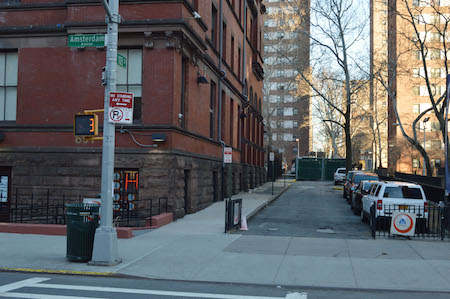
According to Mills, a teacher for 30 years at the alternative high school, Rockwell’s artworks provided the students with a unique window into American society, from subjects that touched on race, civil rights, and personal expression.
After their class visit to the Norman Rockwell Museum in Stockbridge, Massachusetts, where the “Four Freedoms” paintings are housed, the students were made aware of the artist’s upbringing on the Upper West Side. Despite being such a ubiquitous name in American culture, the students were hard-pressed to find any ties to Rockwell in the neighborhood.
Fueled by Mills, the students wanted to honor Rockwell’s legacy with a street renaming, but on the way, they also earned a valuable civics lesson outside the classroom.
“Throughout the whole process, it wasn’t just about putting up the street sign,” said Kaitlyn Santiago, one of the students who poured in her efforts. “It”s about how bad you want it. You have to sit at meetings, stay late, do a lot of research, and be determined to get what you want.”
Their efforts began on Election Day 2014 when they canvassed voters outside their high school, a designated polling location, for petition signatures. With 300 people signed onto their idea, their next hurdle was winning approving from Community Board 7, which, in short order, voted unanimously to accept the proposal.
At every stage, the Norman Rockwell Museum’s director of education Tom Daly lent his support to the students’ cause. While the students explored their connections to the artist, Daly gave historical insight and stressed the scope of Rockwell’s impact on American culture and, specifically, high school students.
Despite his unfaltering support, Daly joined Mills in reminding the youths that their efforts could get stonewalled at any point in the process. But the students persevered and even stuck around for the full Community Board meetings on several occasions to gain informal lessons in civics.
“I’ve been at the museum for 20 years and I haven’t seen a group of kids that excited,” Daly said. “If you consider what the kids at West Side [High School] have to work with, that’s an amazing thing.”
As the students gained momentum, their cause was joined by City Councilmember Mark Levine, who drafted the bill that called for the renaming. After being passed by the City Council on February 5, the mayor signed it into law several weeks later, among other street renamings.
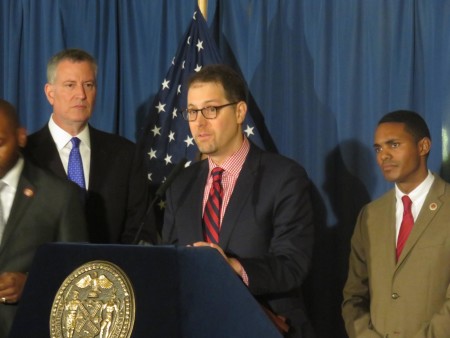
Levine admitted it was the West Side High School students who clued him into Rockwell’s birthplace being in his district.
“No doubt Rockwell’s experiences in the Upper West Side helped inspire him to produce powerful works depicting everything from the civil rights movement to FDR’s Four Freedoms,” Levine said.
Alongside Hip Hop Boulevard in the Bronx and Queens’ Randolph Holder Way — memorializing the police officer who was shot and killed last October while on duty in East Harlem –– Norman Rockwell Place was established with de Blasio’s signature, achieving the students’ goal of preserving the artist’s legacy and ties on the Upper West Side.
“Not a lot of people recognize what artists do, not only nowadays but back in the 1900s,” said Asia Smiley, another student who joined in the efforts. “We learned a lot about Norman Rockwell and his pictures he drew… this helps his memory stay alive.”
The students are now just counting down the days until the June 9 unveiling ceremony, where they will see a physical manifestation of their persistent efforts.
“[They] have changed New York City’s history,” Mills said of her students. “[They] have reclaimed Norman Rockwell back to his birthplace, they city where he got all his spunk to do what he did so well.”



